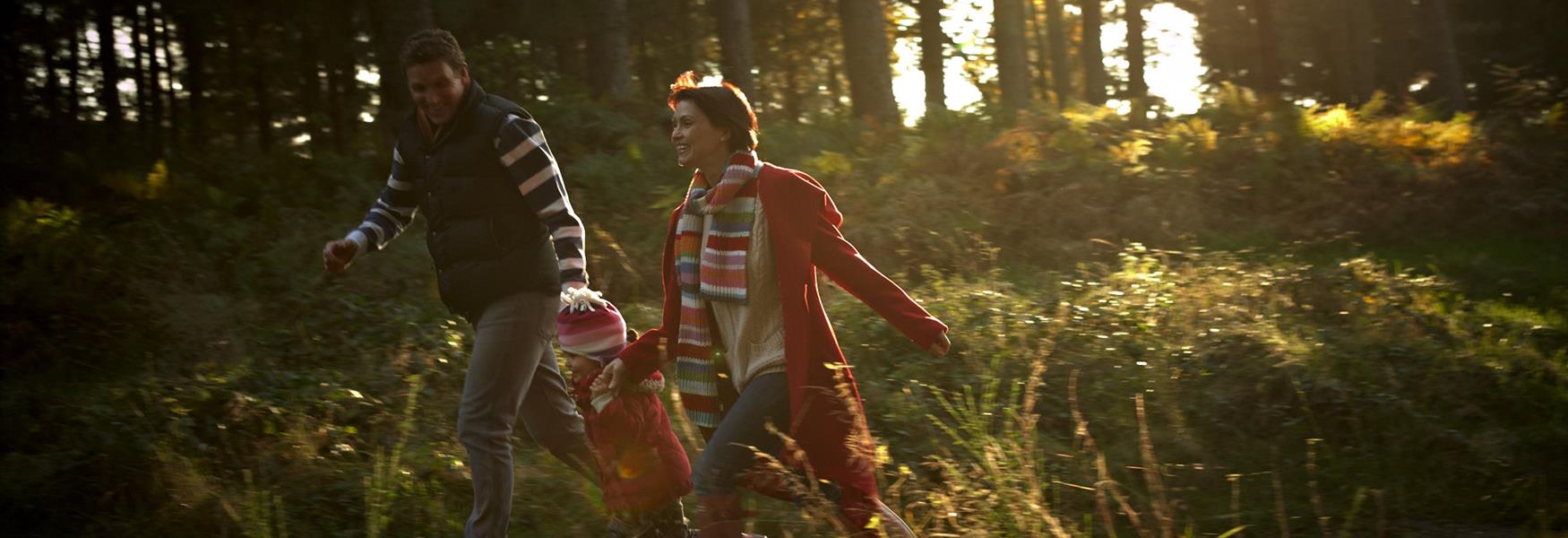Whether you want to wander through wildflower meadows, explore ancient woodland or watch the wildlife while you get away from it all, Nottinghamshire has an abundance of green, open spaces. You’ll find a huge range of Nature Reserves and wildlife conservation areas, perfect for long walks surrounded by the beauty of the natural world and appreciating the flora and fauna which flourishes.
This 450-acre country park was designated a National Nature Reserve in 2002 and is home to hundreds of species of bird, insect, mammal, fungi, tree and plant. Sherwood Forest is, of course, internationally famous for its legendary links to a different kind of Robin – our original outlaw, Robin Hood and his band of merry men.
The jewel in the crown is the collection of ancient oaks – almost 1,000 of them, including the colossal Major Oak, making this the biggest and best place to find these trees in Europe.
For more walking routes in Sherwood Forest and other woodlands, click here.
This site was originally purchased in 1987 and comprised some two acres of `rough and concrete,' and 44 acres of arable land. This has gradually been transformed to provide an attractive reception area and tearoom housed in a pine cabin within the wildlife garden that has been created. The wild flower meadows, wildlife hedge, pond and marsh,- woodland edge habitat, butterfly and bee garden, cottage garden, rockery and dry stone wall depict habitats can today be utilised and are ideally suited to growing wild flowers and attracting wildlife. There are over 70 acres of meadow and woodland walks to explore. The farm and meadow walks are open all year round.
Creswell Crags in North Nottinghamshire is a limestone gorge honeycombed with caves and smaller fissures. Stone tools and remains of animals found in the caves by archaeologists provide evidence for a fascinating story of life during the last Ice Age between 50,000 and 10,000 years ago. Further evidence came to light in 2003 with the discovery of Britain’s only known Ice Age rock art.
It is also home to the biggest concentration of ‘witches’ marks’ found in British caves. "Apotropaic" marks were scribed into the cave surface as they were thought to keep evil spirits coming from the underworld. Hundreds of these protective marks, believed to be from the 17th and 18th Centuries, were discovered in 2018.
Sherwood Pines is the largest forest open to the public in the East Midlands with over 3,300 acres to discover, free admission, bike hire, natures trails and Go Ape Treetop Adventure.
Attenborough Nature Reserve
Located just a short drive or bus ride from Nottingham city centre, close to the bustling town of Beeston, you’ll find the expansive Attenborough Nature Reserve, which covers 145 hectares of lakes, wetland and grassland. Despite its close proximity to well populated areas, the reserve thrives as a natural habitat and attracts all sorts of wildlife from herons to pine martins.
Managed by the dedicated team at Nottinghamshire Wildlife Trust, it is maintained year-round and is a popular destination for eco-tourists. They run activities and events throughout the year, both out in the reserve and in the Nature Centre, where you’ll also find a shop and café. Interestingly, the reserve is named after the pretty village which sits beside it, not national treasure and world-famous naturalist Sir David Attenborough, although he did open the reserve back in 1966.
Dukes Wood Nature Reserve
Duke's Wood Nature Reserve is an intriguing mix of industrial heritage and conservation area. It was the location of the UK's first onshore oilfield and on the Duke's Wood industrial archaeological nature trail you’ll see some the of the original 'nodding donkey' pumps which have been restored. The ancient and secondary woodland is dominated by oak, ash, hazel and birch and many pretty wildflowers thrive here, including many species of wild orchid and also the rare Vetch Nissola, which is found only in one other location in the UK.
RSPB Beckingham Marshes
The RSPB Beckingham Marshes is a thriving wet grassland & hay meadow nature reserve in the Trent Valley, complete with visitor trails. The wetland provides ideal conditions for lots of wetland wildlife. Amazingly, it covers over 800 hectares of farmland – the equivalent of approximately 1,600 football pitches.
Devon Pastures Local Nature Reserve
The Devon Pastures Local Nature Reserve includes the Sconce and Devon Park. A large area of public open grass and woodlands, it boats a Queen’s Sconce (a 17th century Civil War earthwork fortification). The Scheduled Ancient Monument is one of the country's finest remaining earthworks from the English Civil War. The park also includes a cafe, children's play area, a football centre and a network of pathways suitable for wheelchairs.



